Learn how to build the ultimate bugout bag for kids with practical essentials, safety tips, and age-appropriate supplies to keep your children prepared for emergencies.
Creating the ultimate bugout bag for kids is all about preparation, peace of mind, and keeping your children safe in unexpected situations. Over the years, I’ve learned what’s truly essential to include for kids of different ages, from basic survival tools to comfort items that help them stay calm. In this guide, I’ll walk you through step-by-step how to pack a bag that’s practical, lightweight, and kid-friendly, ensuring your children are ready for emergencies while giving you confidence that they’re equipped to handle whatever comes their way.
This is a pinnable post. Tap or hover over any image in this post to pin to your Pinterest Boards.
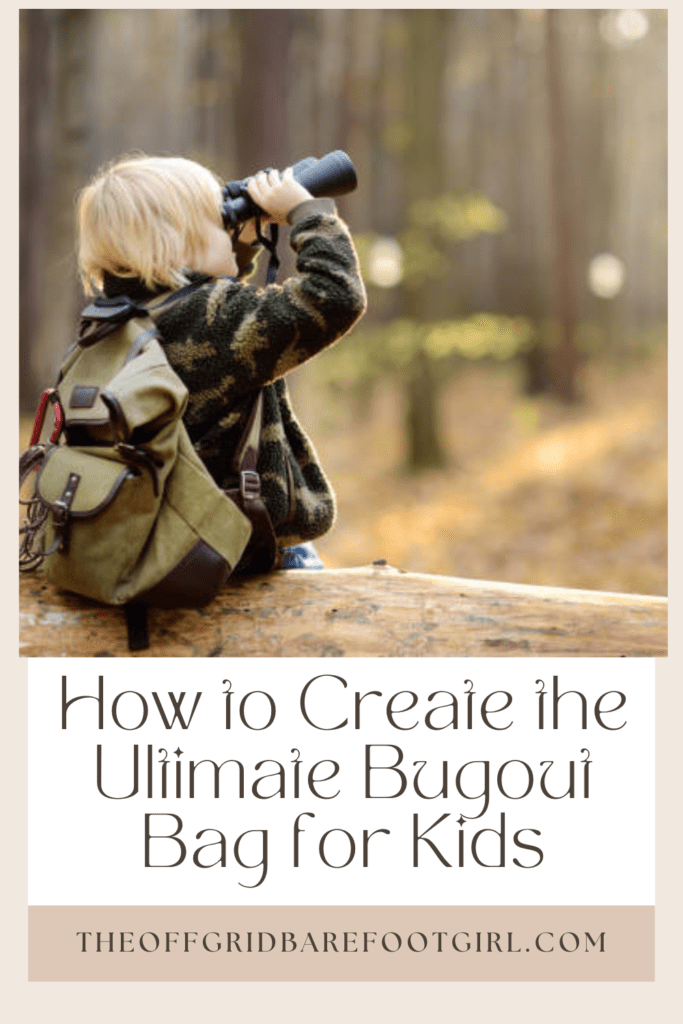
Importance of Bugout Bags for Kids

Imagine your child facing an emergency without the essentials they need. Uncomfortable, right? That’s why bugout bags for kids aren’t just a good idea—they’re crucial. These bags ensure your little ones are prepared for unforeseen events, be it a natural disaster or any unexpected situation. It’s about giving them a sense of security and teaching them early on about preparedness.
Equipping kids with their own bugout bags means they have their own survival kit tailored to their specific needs, from food and water to comfort items that can help ease stress in tense situations. Essentially, a bugout bag for your child is a peace of mind in a backpack, ensuring they’re always a step ahead in safety.
Essential Items to Include in a Kid’s Bugout Bag
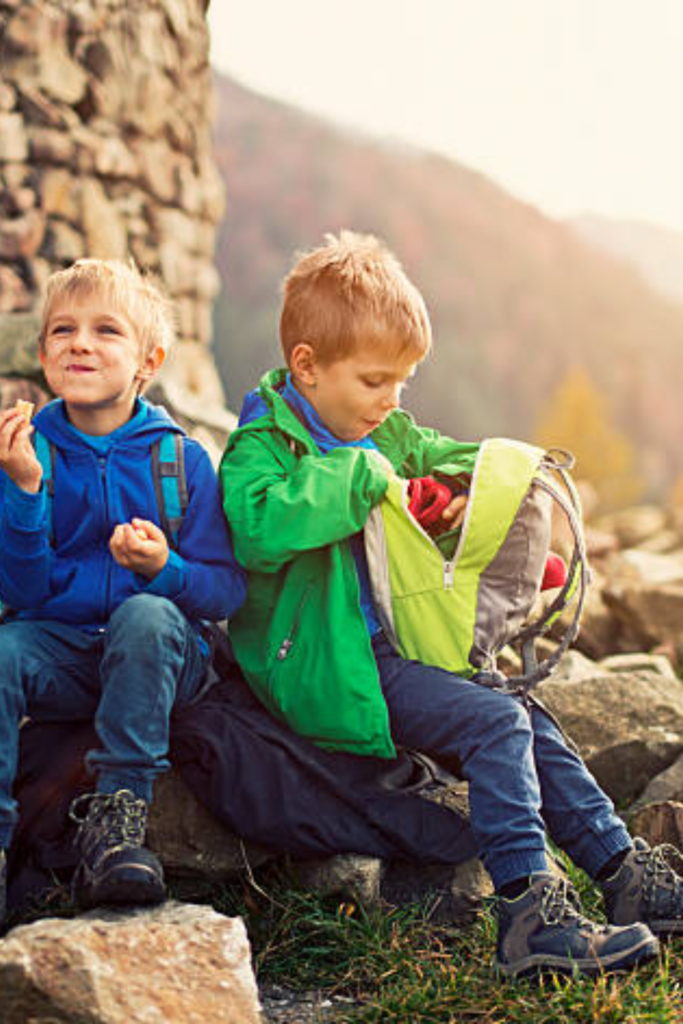
When assembling a bugout bag for kids, think of practicality wrapped in some fun. It’s not just about packing; it’s about preparing your child for an unexpected journey with essentials that keep them safe, comfortable, and entertained. Here’s what to tuck inside:
Basics First
- Water and Food: Include a water bottle (preferably one with a filter) and non-perishable snacks that are kid-friendly. Think energy bars, dried fruits, and crackers.
- Clothes: Pack a change of clothes suited to the climate, including underwear and socks. Layering options are a must.
- First Aid Kit: A basic kit with band-aids, antiseptic wipes, and child-safe medications. Don’t forget to add sunscreen and bug spray.
Comfort Items
- Blanket or Sleeping Bag: Compact and lightweight is the key. It provides comfort and warmth.
- Flashlight and Extra Batteries: Choose a user-friendly flashlight, perhaps one that’s colorful or themed.
- Whistle: A bright, durable whistle can be a lifeline for getting attention.
- Compass or GPS Device: Depending on the child’s age, a simple compass or a more advanced GPS device can teach them about navigation.
Entertainment
- Small Toys or Books: These can be invaluable for keeping spirits up. Choose items that won’t weigh down the bag, but can provide comfort or distraction.
By focusing on these essentials, your child’s bugout bag will be a well-balanced blend of survival, comfort, and a touch of home, no matter where they are.
Choosing the Right Bag for Kids
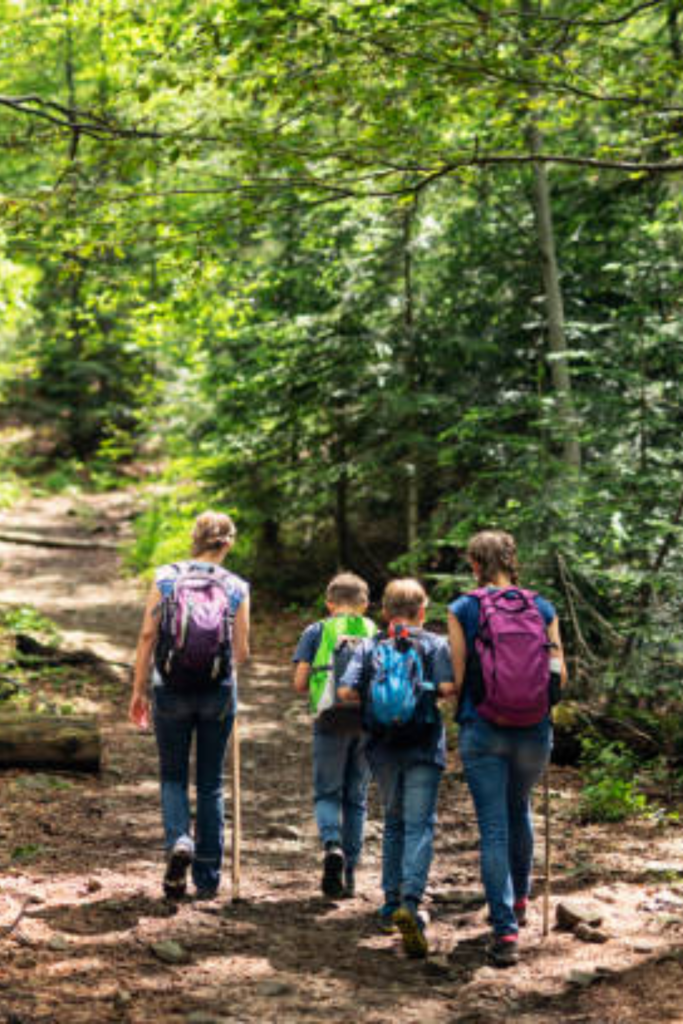
When it comes to selecting the perfect bugout bag for your child, comfort and size take the lead. Opt for a lightweight backpack that won’t weigh them down, but ensure it’s durable enough to withstand a bit of rough and tumble. The fit is crucial; it should sit snugly on their shoulders without slipping. Look for adjustable straps that can grow with them, ensuring the bag remains a good fit over time.
Remember, the bag’s design matters to your child. Let them pick a style or color they love—it’ll make them more inclined to carry it without complaint. A few compartments are handy for organization, but don’t go overboard; it should be simple enough for them to find what they need without help. Prioritizing these aspects makes the selection process smoother and ensures the bugout bag is a hit with your kids.
Customizing the Bugout Bag for Your Child
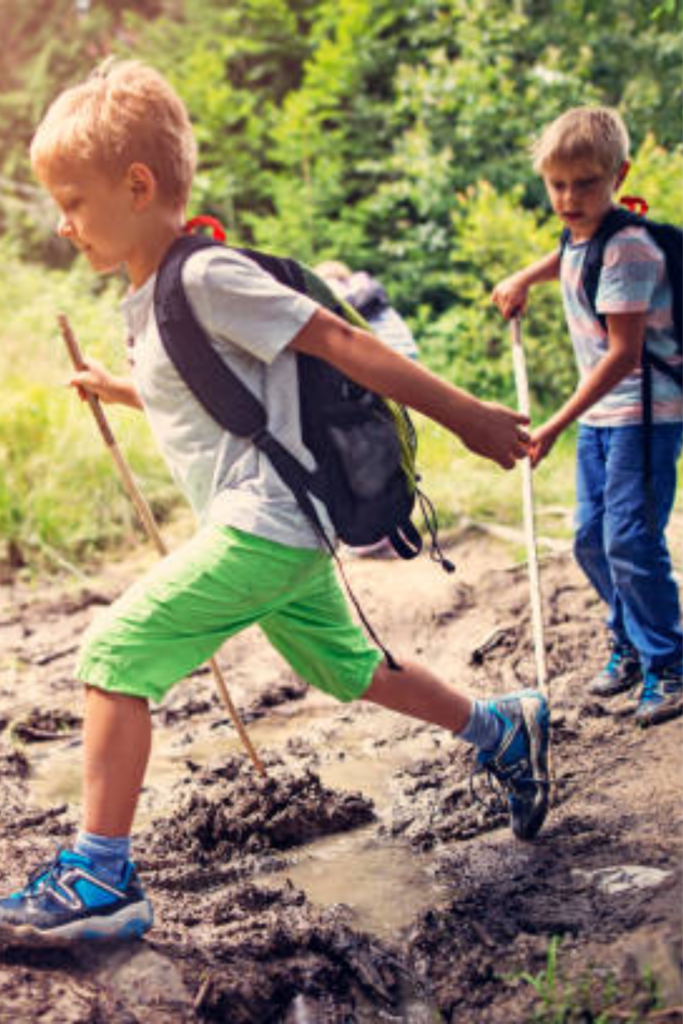
Customizing a bugout bag isn’t just about throwing in the essentials; it’s about tailoring it to your child’s age, needs, and preferences. Think of it as a personalized survival kit that not only meets the basic requirements but also comforts them in times of stress.
- Age-Appropriate Gear: Start by selecting items that your child can actually use. There’s no point in packing equipment they can’t operate. For a young child, this might mean including a simple flashlight and whistle, whereas an older child could handle a multi-tool.
- Personal Favorites: Include a few of their favorite snacks or a small toy to provide comfort and a sense of normalcy. These items don’t have to be big, but they should be something familiar to help ease their anxiety.
- Comfort Items: A lightweight blanket or a favorite small stuffed animal can be immensely reassuring in unfamiliar situations. These are essential for younger kids, but can be meaningful for older ones as well.
Remember, the goal is to make them feel secure and capable. By customizing their bugout bag, you’re not only preparing them for emergencies but also instilling confidence and resilience.
Getting Your Kids Involved
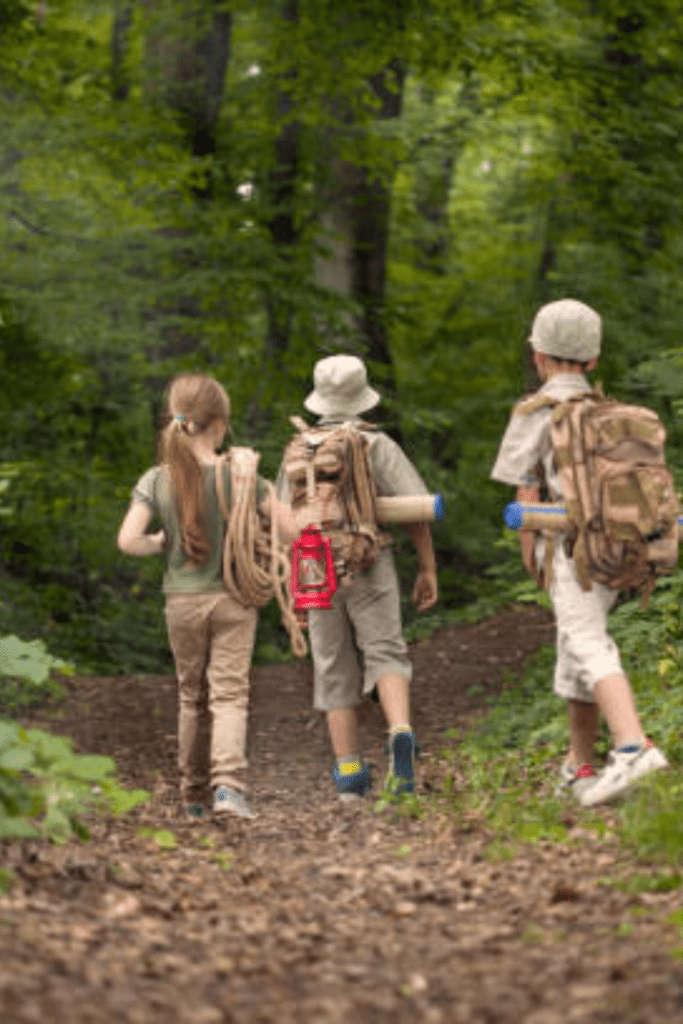
Involving kids in the process of building their bugout bag can turn a safety exercise into an engaging adventure. Start by sparking their interest; present it as a mission they’re starting on. Let them choose a few personal items to add, like their favorite book or a comfort toy, making the bag feel more personal and reassuring.
DIY Decorations
Allow them to decorate the bag with patches or markers. It’s a fun activity that also makes their bag easily identifiable.
Practice Packing
Guide them through packing and unpacking their bag. It’s a practical way to teach organization and prioritization—skills that extend beyond just emergency preparedness.
Role-playing Scenarios
Through role-playing, you can simulate different emergency scenarios. It’s a hands-on method to teach them how to use items in the bag effectively and understand their importance. Here are some ideas to help you get started.
1. Lost in the Woods
- Scenario: Pretend you’re on a family hike and get separated. Teach them to use their bugout bag to find food, water, and shelter until help arrives.
- Objective: Teach kids to use a whistle for signaling, find safe places to stay, and identify useful items in their bags.
2. Camping in a Storm
- Scenario: Imagine you’re camping and a sudden storm hits. Teach them to use their bugout bag to secure the tent, keep warm, and stay dry.
- Objective: Show kids how to stay calm, set up an emergency shelter, and use ponchos or tarps.
3. Evacuating for a Natural Disaster
- Scenario: Simulate a natural disaster like a wildfire or flood where you need to leave home quickly. Practice packing the bugout bag and leaving the house in a hurry.
- Objective: Reinforce the importance of having the bugout bag ready and knowing what to do in an evacuation.
4. Power Outage Adventure
- Scenario: Pretend the power goes out at home during a storm. Use your bugout bag to find flashlights, snacks, and ways to stay entertained without electricity.
- Objective: Teach kids about using emergency lighting, conserving battery power, and staying safe indoors.
5. Lost in a Crowded Place
- Scenario: Imagine you’re at a busy amusement park and get separated from the group. Teach them to use items in their bugout bag to stay safe and find help.
- Objective: Help kids understand the importance of staying in one place, using a whistle, and knowing emergency contact information.
6. Surviving a Car Breakdown
- Scenario: Your car breaks down in a remote area. Use your bugout bag to stay safe and comfortable until help arrives.
- Objective: Teach kids how to stay calm, use emergency blankets for warmth, and find snacks and water in their bags.
7. Stranded in Winter Weather
- Scenario: Pretend you’re stuck in a snowstorm while traveling. Use your bugout bag to keep warm and signal for help.
- Objective: Demonstrate the use of thermal blankets and hand warmers, and the importance of staying dry and warm.
8. Home Fire Drill
- Scenario: Practice a home fire drill where you need to grab your bugout bag and exit the house safely.
- Objective: Emphasize the importance of having a plan, knowing the exits, and meeting at a designated safe spot.
9. Emergency Shelter Building
- Scenario: You need to build an emergency shelter using only items from your bugout bag and the surrounding environment.
- Objective: Encourage creativity and resourcefulness, showing kids how to use tarps, ropes, and natural materials to create shelter.
10. Staying Calm in a Panic
- Scenario: Simulate a sudden, unexpected event like a minor earthquake. Practice staying calm, using your bugout bag, and following safety procedures.
- Objective: Reinforce the importance of remaining calm, using safety supplies, and listening to instructions.
Remember, the goal is to empower your kids, turning a daunting concept into a confidence-building exercise. Help them conclude what they thought was missing in their bugout bags and what they wished they had packed, and help them add those items to their bags.
Teaching Your Kids How to Use Their Bugout Bags
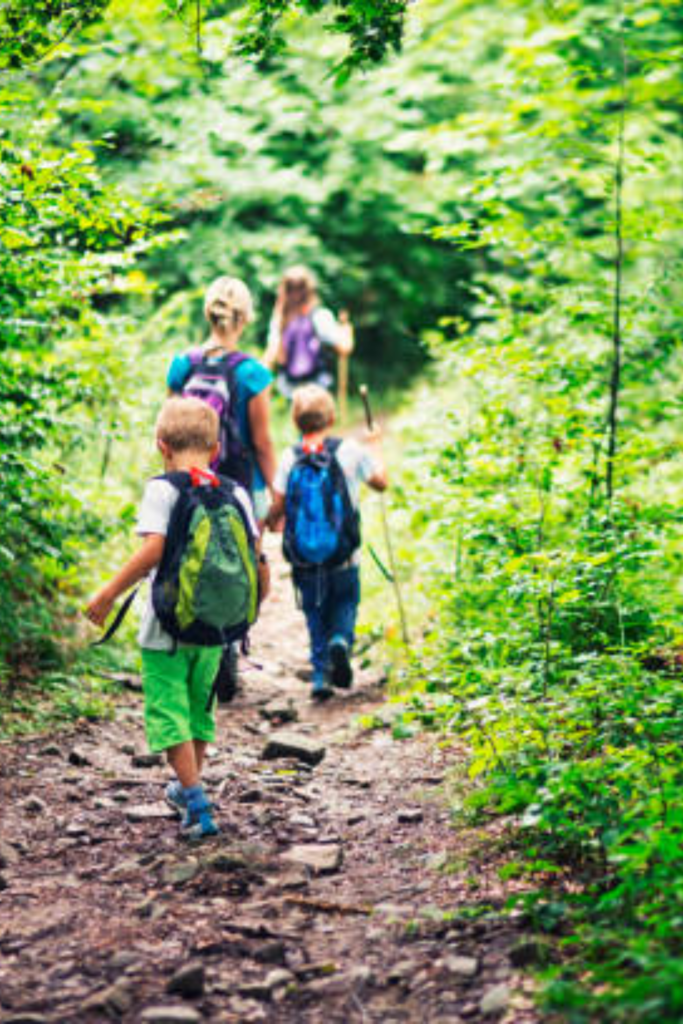
Teaching kids the ropes on how to properly use their bugout bag is just as crucial as putting it together. Think of it like this: a tool is only as good as the user’s ability to use it effectively. Start with periodic reviews of the bag’s contents, turning it into a fun and interactive learning session rather than a chore. Explain the purpose of each item, how and when to use them, reinforcing safety and responsible behavior.
Teaching Your Kids How to Maintain Their Bugout Bags
Maintenance is key to ensuring the bag is always ready. Guide them on checking expiration dates of perishables, swapping out seasonal clothes, and ensuring all gadgets are in working order. Remember, the goal is to foster independence and preparedness, not fear. By engaging them in this process, you’re not just preparing them for emergencies—you’re instilling valuable life skills.
Conclusion
In wrapping up, creating the ultimate bugout bag for kids isn’t just about being ready for emergencies—it’s about empowering them with confidence and peace of mind. It’s a practical way to involve your children in safety planning, making them feel valued and responsible.
Remember, the best bugout bag is one that’s customized to your child’s needs, involving them in the process. Keep it updated, practice using it, and most importantly, foster an environment where safety is a shared family value. Here’s to preparedness, resilience, and the well-being of our little ones!
Resources: Here are some helpful resources for further information.
- How to Make a Kid’s Bug Out Bag – By Mountain House
- Kids’ Bug Out Bag List – By True Prepper
- What Goes In Our Bug Out Bag – By Are You Prepared, Mama?
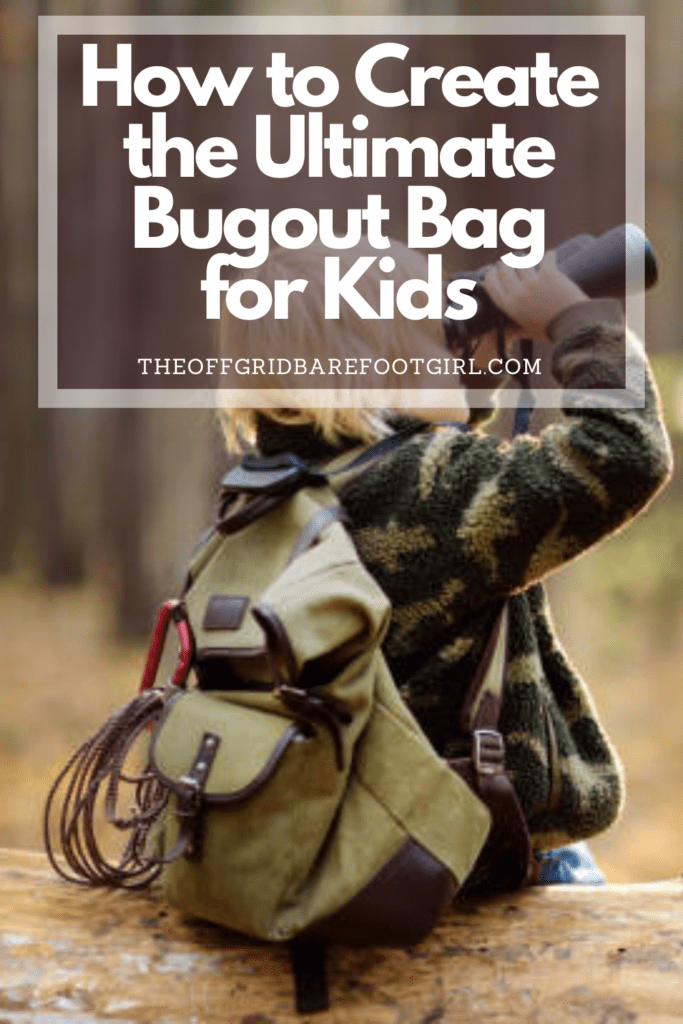
Frequently Asked Questions
1. What should be included in a kid’s bugout bag?
A kid’s bugout bag should include essential items tailored to their needs and safety. This includes:
- Basic survival items like water, non-perishable snacks, and a portable water filter.
- Clothing appropriate for the weather, including extra layers and sturdy shoes.
- Personal hygiene items such as wet wipes, hand sanitizer, and a toothbrush.
- First-aid supplies, including band-aids, antiseptic wipes, and any necessary medications.
- Comfort items like a favorite toy or blanket to provide emotional support.
- Emergency contact information and a family communication plan.
2. How do I ensure my child’s bugout bag is not too heavy?
To keep your child’s bugout bag manageable, focus on lightweight, multi-purpose items and adjust the content based on their age and physical capability. Choose compact, high-energy snacks and minimal, but essential clothing. Involve your child in packing the bag to ensure they understand and can carry it comfortably. Regularly check and update the bag, replacing items as your child grows and seasonal needs change.
3. How often should I update the contents of my child’s bugout bag?
Update the contents of your child’s bugout bag at least twice a year, ideally at the start of new seasons. This ensures clothing is weather-appropriate and food items are fresh. Additionally, review and replace any outgrown clothing, expired medications, or damaged items. Keep an eye on your child’s changing needs and interests, ensuring comfort items are still relevant and comforting.
4. How can I help my child understand the importance of a bugout bag without causing fear?
Approach the topic of a bugout bag as part of a family preparedness plan, emphasizing safety and readiness rather than fear. Use age-appropriate language and focus on the positive aspects, such as being ready for an adventure or camping trip. Practice drills in a fun and engaging way, ensuring your child feels involved and empowered. Reassure them that these preparations are just a way to keep everyone safe in case of an emergency.
Summary
I hope I have inspired you to plan a bugout bag with your kids with these tips and products.
If you were encouraged by this post, I invite you to check out my FREE Printables Page for fun free printables, planners, and charts.
ENTER MY FREE Printables Page HERE
Here are some more of my inspiration posts to check out!
How To Plan An Exciting Easter Egg Hunt In Your Spring Garden!
DIY Pop-Tart Gingerbread Houses: The Ultimate Holiday Activity for Kids
How to Have a Safe and Exciting Mountain Sledding Experience with Teens!
A-maze-ing Fun In a Corn Maze with Teens
17 Free Outdoor Summer Boredom Busters for Kids
Lake Fishing with Kids: What to Know Before You Go
Ultimate Guide on River Safety for Kids
Why Archery for Kids Teaches a Growth Mindset
Homeschooling Teens With Anxiety: How Easy It Can Improve Grades
5 Best Gardening Tools for Kids to Complete Chores
How to Open A Can of Food With Your Bare Hands
The Best Activities for First Aid for Kids
Knife Safety for Kids: Ultimate Guide to Their Safety
Blessings,
The Off Grid Barefoot Girl






